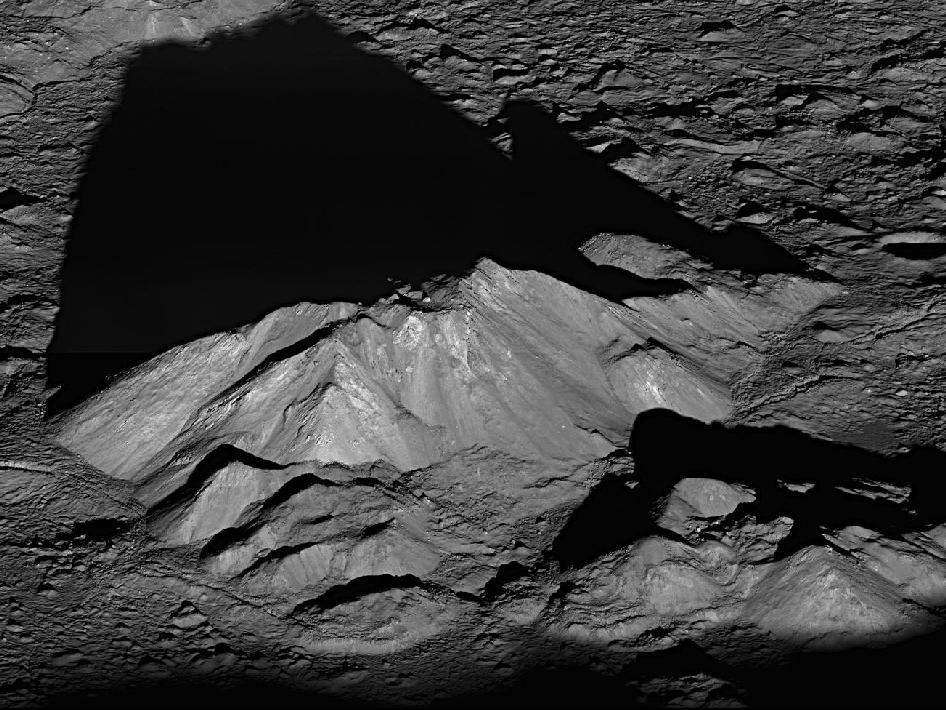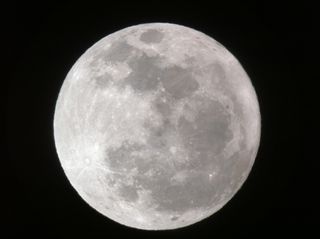
Twenty-five percent of the moon's impact craters may retain substantial remnants of the asteroids that created them, a new study finds.
The surprising result suggests that scientists will have to work a little harder than they had perhaps anticipated to figure out what the moon is made of, researchers said.
"Future studies of the moon's composition will have to show that exposed surface rocks really come from the moon and were not delivered by impacts, especially for unusual or exotic minerals," said co-author Jay Melosh of Purdue University. [10 Surprising Moon Facts]
Melosh and his colleagues, led by Zhong Yue of Purdue and the Chinese Academy of Sciences' Institute of Remote Sensing Applications in Beijing, used computer models to simulate the formation of lunar craters by asteroid impacts.
They determined that one-quarter of space rock strikes on the moon likely occur at a velocity of 26,800 mph (43,130 km/h) or less — blazingly fast, to be sure, but not fast enough to obliterate the asteroid.
Other simulations performed by the team show that, at such impact speeds, little asteroid material is vaporized and lots of it is hurled against the walls of the newly formed crater. If the crater is at least 12 miles (20 kilometers) or so wide, impactor remnants tend to accumulate in a central peak as the crater collapses under the moon's gravity.
The findings of the new study, which was published online today (May 26) in the journal Nature Geoscience, could explain the occurrence of minerals called spinels and olivines in the central peaks of large lunar craters such as the 58-mile-wide (93 km) Copernicus.
Get the Space.com Newsletter
Breaking space news, the latest updates on rocket launches, skywatching events and more!
Spinels and olivines are common in many asteroids, so it's possible that these and other minerals that scientists had assumed were indigenous to the moon were actually delivered via space rock strikes, researchers said.
"We cannot infer the deep composition of the moon from rocks in the centers of large craters without more care than has been used to date," Melosh told SPACE.com via email.

The findings have other intriguing ramifications as well. Some material blasted off Earth by colossal impacts long ago, after all, is thought to have hit the moon at relatively slow velocities.
"This raises the possibility of finding early Earth material, ejected by collisions billions of years ago, in massive deposits on the moon, and suggests yet another explanation for the spinels: that they are deposits derived from the Earth’s upper mantle, emplaced long ago on to the moon and reworked," Erik Asphaug of Arizona State University writes in an accompanying commentary in the same issue of Nature Geoscience.
"Even more provocative is the suggestion that we might someday find Earth’s protobiological materials, no longer available on our geologically active and repeatedly recycled planet, in dry storage up in the lunar 'attic,'" Asphaug adds.
Follow Mike Wall on Twitter @michaeldwall and Google+. Follow us @Spacedotcom, Facebook or Google+. Originally published on SPACE.com.
Join our Space Forums to keep talking space on the latest missions, night sky and more! And if you have a news tip, correction or comment, let us know at: community@space.com.

Michael Wall is a Senior Space Writer with Space.com and joined the team in 2010. He primarily covers exoplanets, spaceflight and military space, but has been known to dabble in the space art beat. His book about the search for alien life, "Out There," was published on Nov. 13, 2018. Before becoming a science writer, Michael worked as a herpetologist and wildlife biologist. He has a Ph.D. in evolutionary biology from the University of Sydney, Australia, a bachelor's degree from the University of Arizona, and a graduate certificate in science writing from the University of California, Santa Cruz. To find out what his latest project is, you can follow Michael on Twitter.











